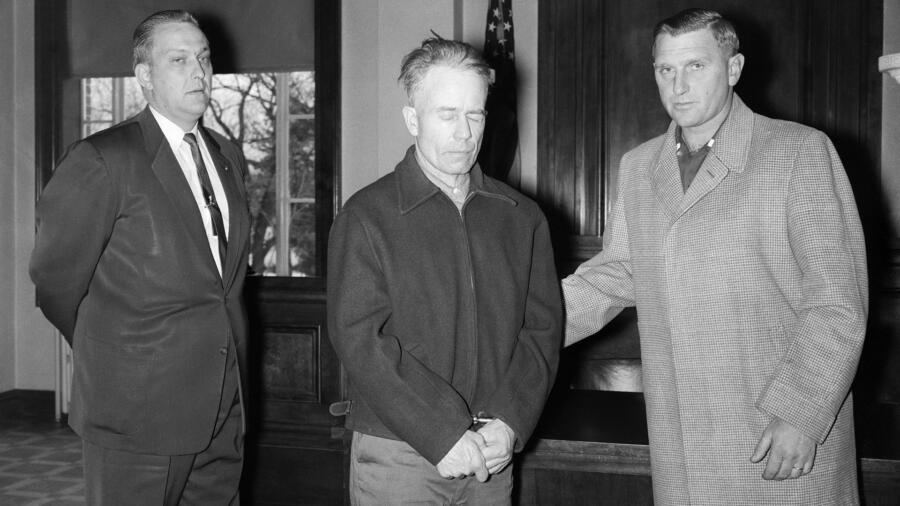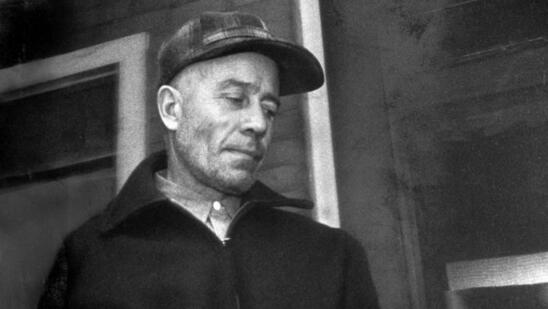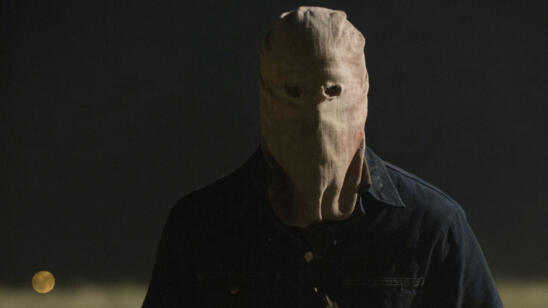There are plenty of murderers who have killed more times than Ed Gein, but few have left a deeper impression on American culture.
In the fall of 1957, police in Plainfield, Wisconsin entered the isolated farmhouse of a quiet loner who had mostly kept to himself in the years since the death of his domineering mother. Entering a summer kitchen attached to the house, they saw a carcass hanging by its heels from a rafter. It took some moments before they realized that this was a woman’s headless corpse: local hardware store owner Bernice Worden. Gein had shot the 58-year-old widow in the shop and driven her body back to his property, where it was undergoing initial preparations to take its place in a macabre collection.
[Stream Invisible Monsters: Serial Killers in America in the A&E App.]
Searching through the house, the detectives made ever more bizarre and shocking discoveries: chairs made with human skin, skulls turned into bowls, stuffed faces mounted on the walls, a torso tailored into a wearable vest. In addition, they found a box containing female genitalia, a belt made of nipples, a bagged heart, a pair of lips attached to a light shade-pull. Most of these horrendous objects were the result of grave-robbing rather than murder. After his arrest, though, Gein did admit to another killing—that of a tavern keeper, Mary Hogan, whose body, weighing more than 200 pounds, he had calculated would be big enough for a skin suit.
Although Gein confessed to the killings when arrested, and directed police to the graveyard where he had dug up his other human material, he seemed to have little sense that he had done wrong. Doctors pronounced him insane, diagnosing schizophrenia, and he was committed to a mental hospital in Waupun, Wisconsin for the rest of his life. Though 10 years later he was pronounced fit to stand trial, he was found “not guilty by reason of insanity,” and returned to a secure hospital.
In this 1957 photo an unidentified police officer looks through Ed Gein’s kitchen. Photo Bettmann/Contributor/Getty Images
The origins of Gein’s unspeakable crimes—which paradoxically became the talk of every town in America—lay in his extraordinarily harsh upbringing. Born in 1906, the younger son of an alcoholic father, George, and a mother, Augusta, whose puritanical cruelty bordered on psychosis, Gein was schooled only to eighth grade. Neither his father, who died in 1940, nor his elder brother, who was killed in a retrospectively mysterious marsh fire in 1944, had anything like the influence of Augusta on Gein. Her attitudes to outsiders, to women in particular, and to sex were all unswervingly hostile. Her force of personality was such that Gein became totally and unhealthily dependent on her.
Two years after Augusta’s death, Gein started making visits to local cemeteries. Over the next 10 years, he amassed a collection of body parts from at least 15 women, two of whom he killed himself. The purpose was to construct a new version of his dead mother—which Gein then “inhabited” himself when he wore the skin suit and other body parts, and danced in the moonlight.
Gein’s case was a cause célèbre from the moment it was revealed to a horrified but strangely thrilled public. Its even wider cultural impact grew after film director and producer Alfred Hitchcock made a now-classic film loosely based on Psycho, a pulp novel by Robert Bloch (1959). Norman Bates’s shy grin and overbearing mother were almost certainly based on Gein. It seems likely that the inspiration for the multiple personalities Bates assumes in the movie stemmed from his diagnosis of schizophrenia—although that condition has nothing to do with “split personalities” as popularly understood.
Some aspects of Gein’s crimes were made more shocking in Psycho, including the choice of murder weapon: Whereas Gein shot both his victims with a rifle, Norman Bates’s weapon of choice was a knife. Later works partially inspired by Gein, such as The Texas Chain Saw Massacre (in which the killer, Leatherface, like Gein, wears a mask of human skin) and The Silence of the Lambs (in which Buffalo Bill makes a suit out of human skin), embraced or outstripped the horror of the original.
Ed Gein himself died in 1984, 10 years after applying unsuccessfully for release from the secure hospital in Wisconsin. He hadn’t amassed a single blemish on his incarceration record.
Related Features:
Serial Killer Ed Gein Was a ‘Model Patient’ After Being Incarcerated for His Gruesome Crimes
Was a Bad Childhood to Blame for ‘Night Stalker’ Richard Ramirez Becoming a Serial Killer?
‘It Absolutely Broke Me’: What It’s Like to Befriend a Serial Killer


